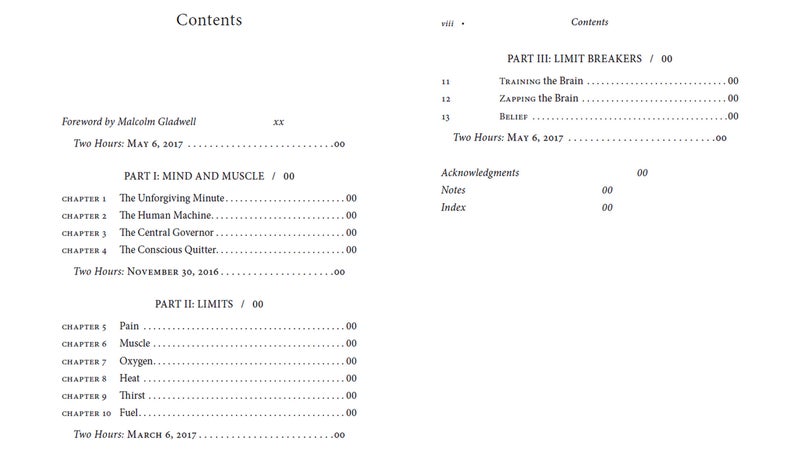Enjoying Sweat Science, but craving a deeper dive? The ideas discussed in the column have spawned two books, the newest of which——will be published in February 2018.
Endure is my attempt to answer the most basic question of all: What is endurance? A wave of recent (and controversial) research has called into question the traditional view that our limits are determined by our hearts, lungs, and muscles. Instead, the limits we perceive as physical often originate in the brain—though it’s too simplistic to say that endurance is “all in your head.”
Over the past decade, I’ve visited labs around the world, interviewed hundreds of scientists, and followed some of the most remarkable athletes in the world in an attempt to decode the mysteries of endurance. I’ve tried out a cutting-edge brain endurance training plan, and I’ve even run electric current through my motor cortex to see if it would make me faster.
The answer? It’s more complicated than I expected, and the nature of your limits depends on the context: whether you’re trekking across the Antarctic, freediving hundreds of feet below the surface of the ocean, or trying to run a two-hour marathon. But in every case, it’s neither the brain nor the body alone that matters—it’s both.
Here’s a peek at the table of contents from the proofs (the final version will have page numbers, I promise):

My previous book, published in 2011, is called . Yes, it’s a mouthful (and no, I didn’t choose the title!). This one is a more straightforward guide to the science of fitness. It takes on 111 common fitness questions, ranging from basic (How long does it take to get into shape? What’s the best way to breathe during exercise?) to technical (Does lactic acid cause muscle fatigue?) to obscure (Does pumping my arms make me run faster? Does competing in front of a crowd improve performance?).
Sometimes there are clear answers; other times there are only a few studies with conflicting conclusions. Either way, the goal is simply to assemble and present the existing scientific evidence as clearly as possible.


